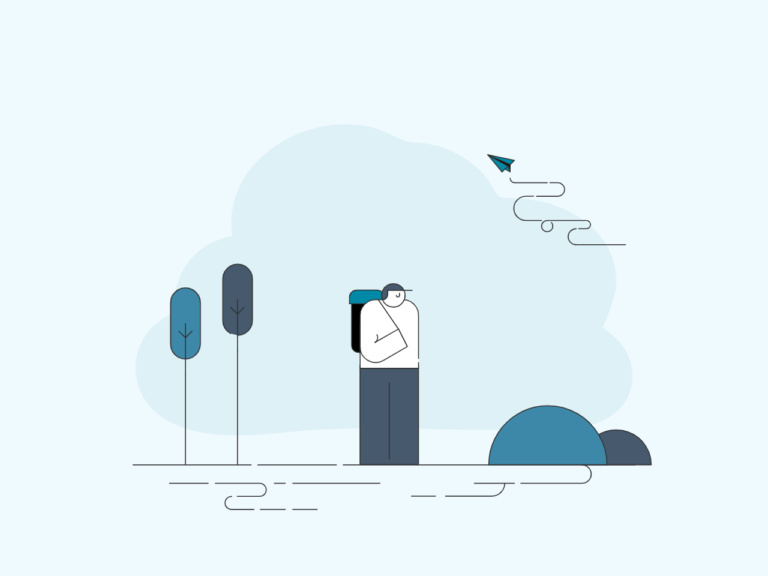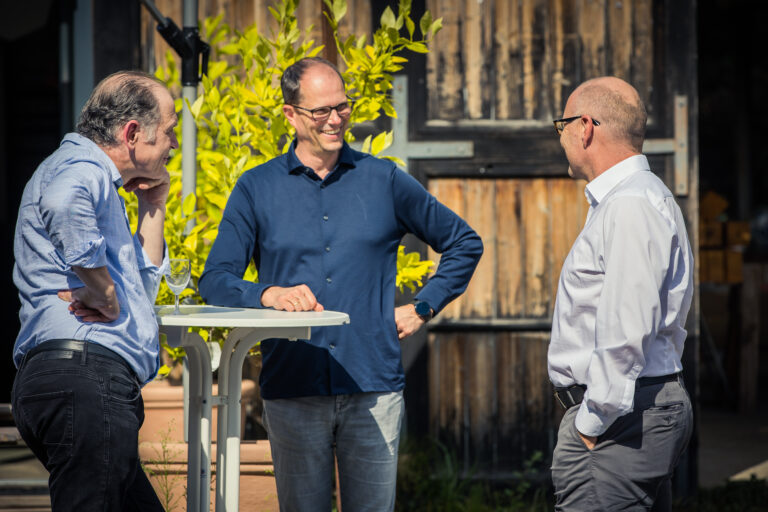Shaping sustainable transformations in companies
The path to the People Company
The COVID crisis at the latest revealed the state of the company’s own corporate culture. Crises usually reveal how sustainable motivation, cohesion, flexibility, customer orientation, creativity, etc. are or are not present in a culture. A crisis also reveals the need for change, which is often ignored in good times. “The good has always been the enemy of the better,” Voltaire already knew in the 18th century.
Now, however, all entrepreneurs, decision-makers and responsible persons in the organizations have been shaken up. On the one hand, it is necessary to take short-term measures to counter the crisis. On the other hand, it is also an opportunity or even a necessity to look at the medium to long term sustainability.
“Agility” is a big trendy word in this context. This is mentioned again and again in this context and many managers can no longer hear it. However, all possible change projects, new tools and measures are subsumed under this buzzword. This word evokes many different images and associations in people’s minds. In fact, a wide variety of models, approaches, or new trending topics use this term, sometimes inflationarily.
The greatest common denominator of this term is probably the ability to adapt to change. But at the same time, this shows that it has always existed and was necessary. Today’s progress and change in society, technology, organizations, mindsets, attitudes has at every time in history been a result of adapting to a changing world.
Changes bring dynamics
What brings these adaptations into sharper focus in these current times is the complexity and dynamism with which changes are occurring in the world. Not only the crises of the last decade, but also other sudden events make it clear that there are actually hardly any periods of continuity and stability left.
That is why today people talk about permanent change, which organizations are exposed to. This is then quickly joined by demands that we humans must react to this and also become much more willing and also able to change. So it’s not just about agile organizations, it’s also about agile people. Ultimately, it’s about an agile mindset that ideally every employee has from now on. This would also provide much better support for companies’ change efforts.
Basic human needs are not necessarily at play here, whether we like it or not. But the basic need for security, stability and orientation is possessed by every human being, albeit to varying degrees. Simply imposing agility on every employee now, or trying to convince them of it with a little more commitment, will have little effect. On the contrary, when these needs are severely threatened, a person naturally reacts with flight, defense, attack, or numbness. Ultimately, this is also the main reason why many change projects end with little to moderate success.
Is there a solution to this dilemma?
Where is the solution to this dilemma? After all, it would be too good if there were a patent remedy, which many managers are actually looking for. Let’s first take a somewhat exaggerated and to-the-point look at the two classic approaches or strategies for change processes, each of which has very prominent representatives:
- It is important to win people over for change, to turn those affected into participants, to convince them, and to work on the mindset so that as many employees as possible understand and go along with the change.
- Something is simply changed in the system, the framework conditions are changed, the structure and processes are adapted so that people adapt themselves or leave the system. After all, this is how it has always worked in the course of evolution.
Both approaches have their justification and good arguments, but also disadvantages and costs. Approach one is laborious and often not sustainable enough. It is only of limited use if people understand the need for change at some point. Followership always needs both: rational and emotional approval. Emotional approval usually only occurs when the first successes of the change are personally noticeable or can be promised in a very credible way. And the results can take time, just as with cancer therapy, which is painful and draining, offering certainty only much later that the application was successful. Until then, the energy of an entire organization and also of top management, which usually wants to see quick successes, often slackens.
Approach two is usually less costly, because here you act directly on the system, but this may involve high collateral damage. Thus, there is a risk that high-performing employees will leave the company if they feel left out. Employees who see few alternatives for themselves are then more likely to resign or to sabotage the new playing field or the new rules of the game until they are overcome, because here, too, there is a lack of staying power or no sanction options are (or can be) applied.
Is there a third way?
It is by no means intended to give the impression of having found the philosopher’s stone or a patent remedy, but perhaps it is worthwhile to direct a few thoughts towards a possible synthesis or combination of these two approaches. First of all, let’s return to the word agility and define it as follows, following the approach of AgilityInsights.net, which has been researching and collecting data on the topic of agility for years:
“Agility is a dynamic capability that allows individuals, teams and organizations to adapt to changes in the environment on an ongoing basis, without the destructive effects of traditional change projects”
In this way, we have created a starting point and formulated a claim that can probably be endorsed by a great many people in positions of responsibility. But where does this ability come from and how does one acquire it? It is important in this claim to take both an individual perspective and an organizational perspective.
The level of the individual
On the individual level, it would be a viable way to align with people’s motives, needs and affinities without changing them. This is not so easy, because they are already (quite) determined. But if these are known or identified together, there is the possibility of finding suitable activities, jobs or roles for them. A person should know what he wants and what he can do. This is the basis for achieving flow moments on the job as described by Mihaly Csikzentmihalyi in his book “Flow”. Through self-knowledge and intrinsic motivation, it is also possible for a person to develop self-control skills and thus become more mature and stable. Since we can no longer expect stability from our external world, it can essentially only be developed from within, and through a mature personality.
The level of the organization
At the organizational level, the first thing is to really put people at the center. [nbsp]This includes a minimum understanding of what makes people tick, how motivation works, and the long-term effects of ignoring human needs. This includes attention to and promotion of the individual side described above. Secondly, an organization can help to develop a certain resilience, which is extremely important in times of crisis or in times of strong change, so that the individual remains capable of acting. Important in this context to have a Purpose or at least to convey a strong sense of purpose for the individual activities, to strengthen cooperation (also across teams) and to promote good relationships within the organization. These are all the ties that hold an organization together when things get stormy on the outside. Thirdly, the systems, the management behavior and, lastly, important cultural parameters have to be kept on the one hand reliable and on the other hand situationally flexible to new requirements.
Development into a People Company
This third path is the development into a People Company, as we call it, because systems, organizational structures, processes, job profiles are adapted to people and their basic needs as well as potentials and not vice versa. This does not mean that everyone can now do what they want and that certain standards and performance no longer play a role. On the contrary: with this approach, speed, innovation and growth will succeed much more effectively.
The first step (on this third path) could be to take stock with one of our agile scans from the AgilityInsights toolbox. There we collectively survey the relevant factors for agility for selected or all people in your organization, compare them with benchmark values. This allows you to determine relatively precisely where your organization stands, which factors are already well established and where there is potential for improvement.[nbsp] Appropriate change measures are identified in a very targeted manner and subsequently also tackled. Always with the intention that organization and people are not overtaxed and that a sustainable transformation succeeds.
You can find more information here.










